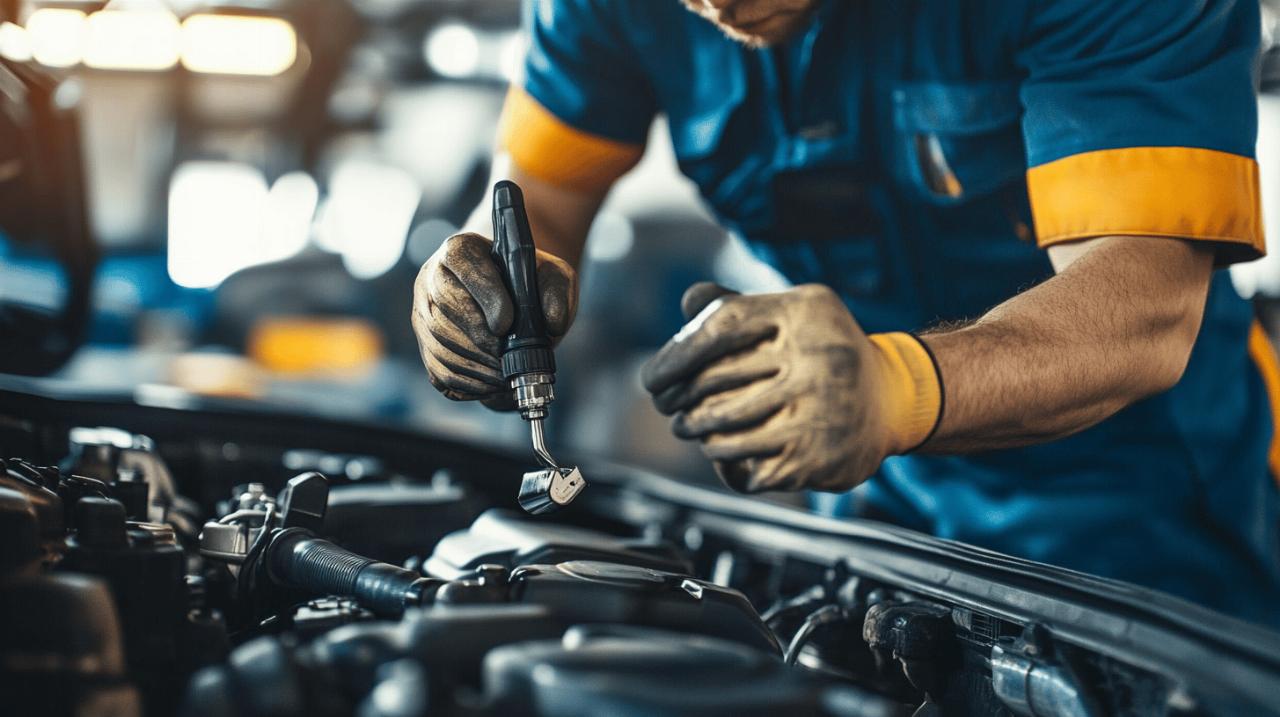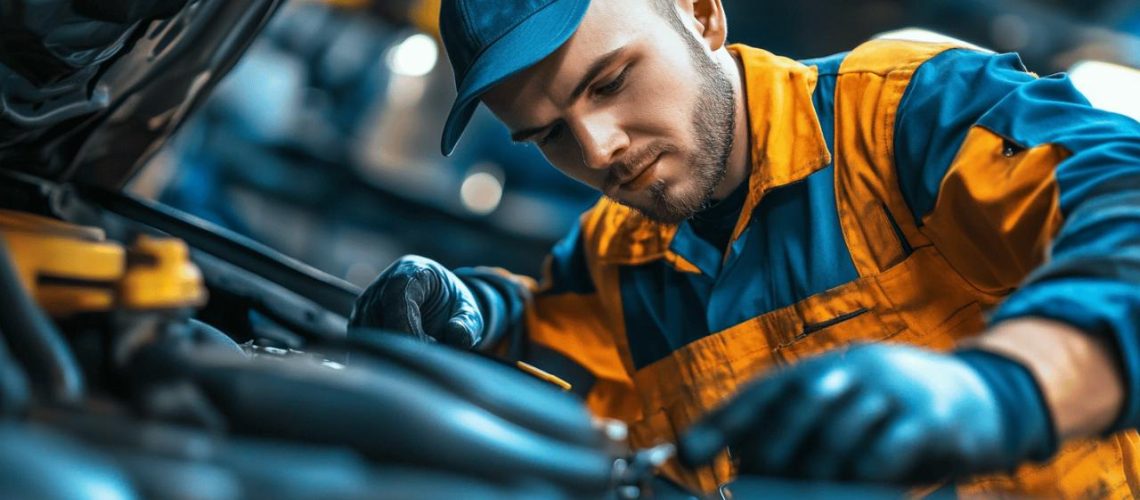Understanding vital fluid levels
Maintaining your vehicle properly is essential for ensuring longevity and optimal performance on the road. The team at Auto Service Gall recommends establishing a regular maintenance routine that includes monitoring vital fluid levels, which serves as the foundation of vehicle care. Proper maintenance not only extends your car's lifespan but also helps avoid costly repairs down the line.
Monitoring engine oil and coolant
Engine oil serves as the lifeblood of your vehicle's engine, providing crucial lubrication to moving parts and preventing premature wear. Check your oil level every few weeks by using the dipstick when the engine is cool and on level ground. The frequency of oil changes varies considerably depending on your driving habits and vehicle model, ranging from every 3,000 miles for older vehicles to 10,000 miles for newer ones. Coolant is equally important as it regulates engine temperature and prevents overheating. Experts suggest maintaining a 50/50 mix of antifreeze to water for optimal performance, especially during seasonal changes when temperature fluctuations can affect engine operation.
Maintaining brake fluid and windscreen wash
Brake fluid requires consistent monitoring as it plays a critical role in your safety system. Low brake fluid might indicate worn brake pads or a potential leak in the system. Inspect the brake fluid reservoir regularly and top up when needed, using the type specified in your owner's manual. Windscreen wash is often overlooked despite being a legal requirement. Ensure your reservoir remains filled with an appropriate solution that can handle seasonal challenges, such as freezing temperatures in winter or insect removal in summer. Good visibility is essential for safe driving, making this simple maintenance task surprisingly important.
Tyre care and maintenance
Your vehicle's tyres are the only points of contact with the road, making their maintenance vital for safety and performance. Proper tyre care also contributes significantly to fuel efficiency and overall handling, with recent studies showing that correctly maintained tyres can improve fuel economy by up to 3%.
Proper inflation and tread assessment
Check tyre pressure monthly or before long journeys, as properly inflated tyres significantly improve fuel efficiency, handling, and tyre lifespan. The recommended pressure levels can be found in your vehicle manual or on a sticker inside the driver's door frame. Alongside pressure checks, assess tread depth regularly using the 20p test – insert a 20p coin into the tread groove, and if the outer band of the coin remains visible, your tyres may be approaching the legal minimum depth of 1.6mm and require replacement. Worn tyres drastically reduce grip, especially in wet conditions, increasing stopping distances and compromising safety.
Rotation schedules and alignment checks
Tyre rotation helps distribute wear evenly across all four tyres, extending their service life. Most experts recommend rotating tyres every 6,000 to 8,000 miles or during oil changes. Additionally, wheel alignment should be checked annually or whenever you notice uneven tyre wear or your vehicle pulling to one side. Proper alignment maximises tyre life, improves handling, and enhances fuel efficiency. If you're considering tyre upgrades, research the differences between standard and XL tyres, as highlighted in recent Auto Service Gall articles, to determine which best suits your driving needs.
Brake system vigilance
The brake system requires consistent attention as it directly impacts your safety on the road. Regular inspection can prevent minor issues from developing into major safety concerns and expensive repairs.
Recognising warning signs
Your vehicle communicates brake problems through various warning signs that should never be ignored. A soft or spongy brake pedal might indicate air in the brake lines or a master cylinder issue. Grinding or squealing noises suggest worn brake pads that need immediate replacement. Vibrations when braking often point to warped rotors, while pulling to one side during braking may indicate uneven brake pad wear or a stuck caliper. The appearance of the brake warning light on your dashboard deserves immediate professional attention, as it may signal critically low brake fluid or other serious system failures that compromise stopping ability.
Preventative brake maintenance
Preventative maintenance includes regular visual inspections of brake components and prompt action when warning signs appear. Have your brakes professionally inspected during routine services, which should occur every 12,000 miles or 12 months. When replacing brake pads, consider changing the brake fluid as well, as recommended in recent Auto Service Gall articles about brake fluid replacement. Fresh brake fluid ensures optimal hydraulic pressure and prevents moisture accumulation that can lead to corrosion within the system. Test your brakes regularly by listening for unusual sounds and feeling for proper resistance in the pedal.
Lighting and visibility considerations
 Effective lighting and clear visibility are fundamental aspects of safe driving, yet they are frequently overlooked in routine maintenance checks. Ensuring all lights function properly and maintaining clear sightlines should be priorities for every vehicle owner.
Effective lighting and clear visibility are fundamental aspects of safe driving, yet they are frequently overlooked in routine maintenance checks. Ensuring all lights function properly and maintaining clear sightlines should be priorities for every vehicle owner.
Bulb replacement and headlight alignment
Conduct monthly checks of all exterior lights including headlights, brake lights, indicators, and fog lights. Replace any blown bulbs immediately, as driving with faulty lights is both dangerous and illegal. Modern vehicles often have complex lighting systems that may require professional assistance for bulb replacement. Beyond replacement, headlight alignment deserves attention as misaligned headlights reduce visibility and can blind oncoming drivers. If your headlights appear dim even with new bulbs, consider cleaning or restoring yellowed or cloudy headlight lenses, which can significantly diminish light output. Some modern vehicles also feature reversing cameras, which require occasional cleaning of the lens to maintain clear images.
Wiper blade care for clear vision
Windscreen wipers deteriorate gradually, making their decline easy to overlook until visibility becomes severely compromised. Replace wiper blades annually or whenever they leave streaks, skip sections, or make chattering noises against the glass. Consider upgrading to winter-specific blades during colder months, as they resist ice build-up and perform better in snow conditions. Regularly inspect your windscreen for chips or cracks, addressing them promptly before they expand into larger, more expensive problems. Keeping your washer fluid reservoir filled with a quality solution helps maintain clear visibility by effectively removing dirt, insects, and road grime from your windscreen.
Vehicle cleanliness and protection
Vehicle cleanliness extends beyond aesthetics; it serves as a form of preventative maintenance that protects your investment and maintains its value. Regular cleaning routines for both exterior and interior components significantly impact your vehicle's longevity.
Exterior washing and waxing routines
Wash your vehicle regularly to remove corrosive substances like road salt, bird droppings, and industrial fallout that can damage paintwork. Use appropriate cleaning products designed specifically for automotive finishes rather than household detergents that may strip protective waxes. Apply a quality wax every six months to create a protective barrier against environmental contaminants and UV damage. Pay special attention to the undercarriage, particularly after winter driving, as road salt accumulation accelerates rust formation. Inspect your vehicle for signs of rust or paint damage during washing, addressing minor issues before they develop into costly bodywork repairs.
Interior maintenance for longevity
The interior requires regular attention to maintain comfort and preserve materials. Vacuum upholstery and carpets frequently to remove abrasive dirt particles that accelerate wear. Clean spills immediately to prevent staining, particularly on fabric seats. Leather upholstery benefits from specific cleaners and conditioners that prevent cracking and fading. Protect dashboard materials from UV damage with appropriate interior protectants or by using windscreen sunshades when parked. Regular interior maintenance not only preserves appearance but also contributes to better air quality inside the vehicle by reducing dust and allergens.
Listening to your vehicle
Developing an awareness of your vehicle's normal sounds and sensations allows you to detect problems early, often before they escalate into major mechanical failures. Your senses serve as valuable diagnostic tools in routine maintenance.
Identifying concerning sounds
Different sounds indicate specific issues requiring attention. A high-pitched squeal when starting or accelerating might suggest a loose or worn serpentine belt that needs adjustment or replacement. Clicking or tapping noises from the engine area often indicate low oil pressure or worn valve components. Grinding sounds when shifting gears typically point to transmission problems requiring professional evaluation. Humming or roaring noises that change with vehicle speed frequently signal worn wheel bearings or differentials. Rattling from underneath the vehicle might indicate exhaust system problems or loose components. By familiarising yourself with normal engine and operational sounds, you can quickly identify abnormal noises that warrant investigation.
Addressing unusual vibrations and performance issues
Vibrations provide important clues about vehicle condition. Steering wheel vibrations at specific speeds often indicate unbalanced wheels or tyres, while vibrations during braking point to warped rotors. A shaking sensation when accelerating might suggest worn engine mounts or driveshaft issues. Performance changes like hesitation during acceleration, rough idling, or stalling can indicate fuel system problems or failing spark plugs. Difficulty starting, particularly in cold weather, might signal battery issues or fuel system problems. Pay attention to changes in fuel efficiency, as sudden decreases often indicate maintenance needs like air filter replacement or oxygen sensor failures. When unusual vibrations or performance issues persist, consult a qualified mechanic rather than allowing problems to worsen.

